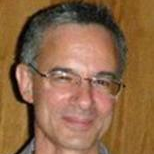Bone Substitute Materials
A special issue of Materials (ISSN 1996-1944). This special issue belongs to the section "Biomaterials".
Deadline for manuscript submissions: closed (30 April 2018) | Viewed by 95251
Special Issue Editor
Special Issue Information
Dear Colleagues,
This issue focuses on the design, synthesis and/or evaluation of bone substitute materials. Appropriate submissions use information about the nanoscale structure of natural bone in a way that allows the synthetic material to duplicate biomechanical and/or cellular behavior of the natural system. Submissions describing attempts to duplicate collagen structures, mineral apatites, ground substance and their hierarchical juxstapositions as found in bone are welcome. All submissions must clearly connect material composition and/or structure with the desired mechanical and/or biological function of the biomaterial. Authors are encouraged to include a section in each manuscript devoted to explaining how the materials science and engineering aspects of the work are related to solving an outstanding clinical problem.
It is my pleasure to invite you to submit a manuscript for this Special Issue. Full papers, communications, and reviews are all welcome.
Assoc. Prof. Steven J. Eppell
Guest Editor
Manuscript Submission Information
Manuscripts should be submitted online at www.mdpi.com by registering and logging in to this website. Once you are registered, click here to go to the submission form. Manuscripts can be submitted until the deadline. All submissions that pass pre-check are peer-reviewed. Accepted papers will be published continuously in the journal (as soon as accepted) and will be listed together on the special issue website. Research articles, review articles as well as short communications are invited. For planned papers, a title and short abstract (about 100 words) can be sent to the Editorial Office for announcement on this website.
Submitted manuscripts should not have been published previously, nor be under consideration for publication elsewhere (except conference proceedings papers). All manuscripts are thoroughly refereed through a single-blind peer-review process. A guide for authors and other relevant information for submission of manuscripts is available on the Instructions for Authors page. Materials is an international peer-reviewed open access semimonthly journal published by MDPI.
Please visit the Instructions for Authors page before submitting a manuscript. The Article Processing Charge (APC) for publication in this open access journal is 2600 CHF (Swiss Francs). Submitted papers should be well formatted and use good English. Authors may use MDPI's English editing service prior to publication or during author revisions.
Keywords
- Bone
- biomaterial
- collagen
- mineral
- ground substance
- biomechanics
- remodelling
- biocompatible
- osteoblast
- osteoclast
Benefits of Publishing in a Special Issue
- Ease of navigation: Grouping papers by topic helps scholars navigate broad scope journals more efficiently.
- Greater discoverability: Special Issues support the reach and impact of scientific research. Articles in Special Issues are more discoverable and cited more frequently.
- Expansion of research network: Special Issues facilitate connections among authors, fostering scientific collaborations.
- External promotion: Articles in Special Issues are often promoted through the journal's social media, increasing their visibility.
- Reprint: MDPI Books provides the opportunity to republish successful Special Issues in book format, both online and in print.
Further information on MDPI's Special Issue policies can be found here.






